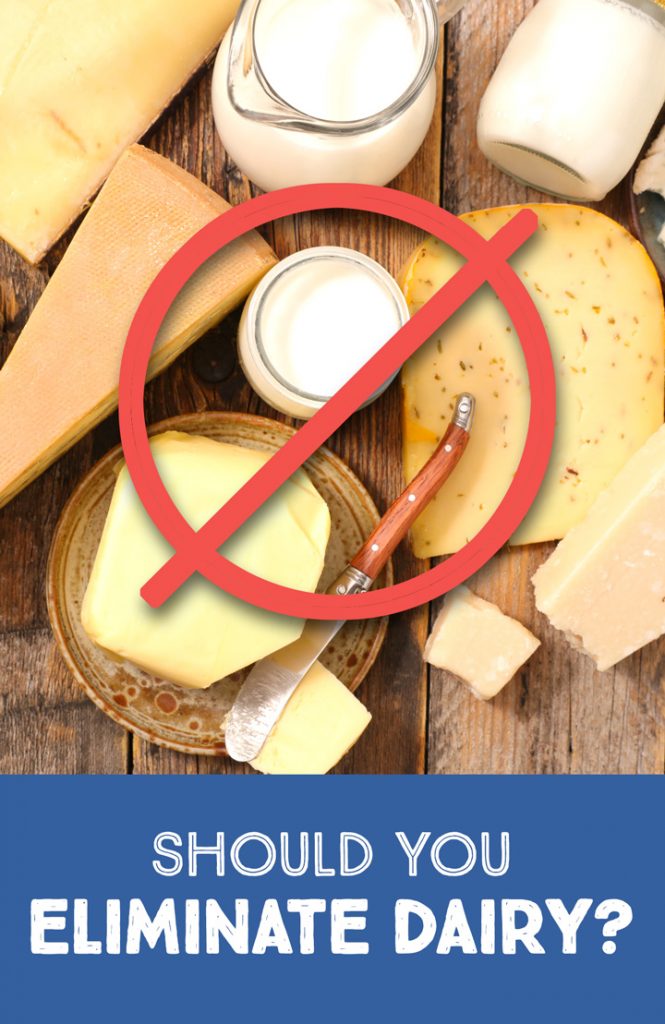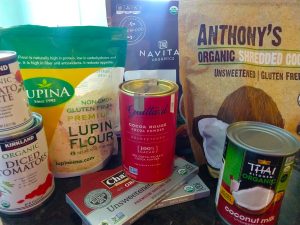I’m removing dairy from my diet (again)!
Ugh! So, shortly after I posted my recipe for Keto Peanut Butter Pie (which, by the way, is rich, creamy and delicious because of dairy products!), I came to the conclusion that I needed to remove dairy from my diet. Honestly, I was kind of bummed! I mean… cheese (I’ve lived in Wisconsin my whole life)! Dairy products didn’t seem to be causing me digestive problems or skin issues (both reasons for which I have removed dairy from my diet in the past). This time I just wasn’t feeling very energetic, was experiencing some brain fog, and I just didn’t feel my best! I had been eating quite clean for a number of years, but I’m always tweaking and experimenting with my diet, and this time was no exception. I have eaten low carb/keto in the past and felt great—even lost a pound or two. So, what had changed this time around?
This time, I was seeing no results. I’m not personally too hung up on my weight, but I felt like I had even gained a couple pounds, which was odd considering I had done keto before and usually lost a few pounds. I also went through phases of joint pain and muscle aches for a couple months, and I hadn’t increased my workouts by all that much, so it wasn’t due to post-workout soreness. I also was experiencing mild allergy symptoms (slight dry cough & slight runny nose) when it wasn’t allergy season. Over this 3-month period, I also noticed an increase in headaches, which I had gotten much under control over the last few years.
My husband and I had followed a ketogenic diet last year at this time as well, and I responded just fine. I felt good, had better mental clarity, and I even lost a couple pounds, which was a bonus. But this best thing I noticed was that I didn’t have a migraine for 5 months. My migraines in general had already substantially improved from many years ago, but I haven’t gone this long without a migraine in more than 20 years! From February 2018 until July 2018, I did not have to take prescription medication to relieve a migraine (I normally average one per month). Then through the rest of 2018, my monthly migraines slowly came back, making me think it was just luck that my 5-month streak was just luck.
Until a few weeks ago, I didn’t connect that it might be dairy that was the culprit. I had considered that it was my low carb/keto diet influencing the positive changes. But since I was now essentially eating the same way I was a year ago except with dairy added in, it only makes sense that I try removing dairy from my diet once again to see if it makes a difference!
I plan to remove dairy for a few months and see if I have fewer headaches. Mine are hormonal so it will take a few cycles with no dairy to see if there is any change. I will update this with any noticeable changes.
Do we need dairy in our diet?
Humans don’t actually need to consume dairy products. It is a common misconception that it is an essential part of a healthy diet. We are the only species that consumes the milk of other animals! And while dairy products do contain some excellent nutrition, the most nutritious dairy products are full fat milk, yogurt, cream, and cheese. Yes, full fat! Not low fat or non-fat. Unprocessed milk contains fat-soluble vitamins A, D, and K. When milk is processed and defatted, these nutrients are stripped from the milk. Did you know that because of this, low fat and non-fat milk producers have to add vitamin D back into the milk (usually in the form of synthetic vitamin D2 which isn’t the most bioavailable form)? is added back to the processed milk rather than the healthy, absorbable vitamin D3 that occurs naturally in the milk fat.
Will I get enough calcium if I eliminate dairy?
It is true, dairy products contain a substantial amount of calcium, but you can get calcium from some seafood, dark leafy greens, nuts and seeds as well. Plus, these alternative sources of calcium are very nutrient dense on their own, supplying other vitamins and minerals along with the vitamin K and magnesium that is required for your body to utilize calcium. Some foods are also fortified with calcium. Personally, I don’t think these are the best sources because manufacturers often use cheap, less bioavailable forms of calcium in their products, and don’t supply the necessary cofactors. So just because your almond milk says that it contains “more calcium than milk”, it often isn’t being absorbed and used by your body! So, in a nutshell: eat leafy greens and some nut’s and seeds for your calcium. Even if your calcium intake is slightly lower, you may actually absorb more of it because you’re are also consuming the necessary cofactors!
What’s the problem with dairy?
Short answer: maybe. I would say it is certainly worth a try. Did you know that worldwide, 70% of people are lactose intolerant? This means that only 30% of people have the digestive enzyme, lactase, which helps digest dairy. This can cause digestive upset after eating dairy products (usually more so from milk and ice cream because cheese and yogurt contain very little lactose). Even if you are not lactose intolerant, you may still be intolerant to the proteins whey and casein. I’m not lactose intolerant, but I suspect that I am sensitive to the proteins in dairy.
Dairy can be inflammatory for a lot of people. Often systemic inflammation goes unnoticed because it presents in many different ways in different people, and you may not associate these symptoms with dairy consumption. Some people feel tired, some experience digestive upset, some suffer from hormonal imbalance, while others experience acne.
Should you try eliminating dairy?
You may benefit by eliminating dairy for 4-6 weeks if you experience any of the following:
• Gas & bloating
• Constipation and/or diarrhea
• Headaches & migraines
• Skin issues: acne, eczema, dry skin, redness
• Sore muscles & joints
• Fatigue or tiredness
• Brain fog or difficulty focusing
• Hormonal imbalances (Dairy can exacerbate hormonal issues like PMS, cramps, and irregular cycles)
• Difficulty losing weight
• Seasonal allergies (dairy can increase histamine production which can make allergies worse)
If you decide to give it a try, REALLY give it a fair try. It takes a couple weeks to clear your system of the dairy proteins. You may notice improvements after several days, but most likely it will take 4–6 weeks to notice changes. If your main issues are related to your menstrual cycle, it could take 2–3 months to notice a difference.
Ready to give it a try?
Remove all dairy: milk, cream, ice cream, yogurt, cheese, and butter. You may consume ghee (clarified butter) because the dairy proteins have been removed from ghee. Just choose a brand that is that it is casein free (Tin Star is a good choice). Check nutrition labels carefully. Milk products are used in items that you may not think contain dairy. Look for ingredients like whey, whey protein isolate, milk solids, and casein. Avoid these ingredients.
Then keep track of your symptoms (or lack of symptoms), and your general well-being. Do you feel less bloated? Have more energy? Clearer skin?
After 4 to 6 weeks, reintroduce dairy. After a removal period, it will be easier to recognize symptoms upon reintroduction. Try some aged cheese or yogurt first since they have little to no lactose. See how it works for you. If you have no adverse effects after a few days, try cream or fresh cheese. Pay attention not only to immediate effects like bloating (often occurs a few hours after the offending food), but to delayed responses like acne or eczema that may not appear for a few days. If you begin to experience symptoms again, you now know that dairy contributes to your symptoms. If symptoms never disappeared or reappeared after reintroduction, dairy was likely not the cause. If you still experience mild symptoms, sometimes trying a full elimination diet like a Whole 30, which eliminates, dairy, grains, legumes, sweeteners, and processed food, can really help you figure out which foods are causing problems for you. Always consult your healthcare provider if you continue to have health problems!
Good Luck!
I’m a few weeks in to my dairy-free journey and so far I feel like I have a little more energy and no odd muscle or joint discomfort. My seasonal allergy symptoms seem a little less as well. Hopefully I will find out if removing dairy has been influencing my hormones, that in turn have been causing my monthly migraines, I will update this post on what works and doesn’t work for me in my dairy-free journey. Comment below with your own experience!
Looking for dairy free recipes?
Try these!
Dairy Free Broccoli “Cheese” Soup
Dairy Free Poblano “Cream” Sauce
Dairy Free Queso
Chocolate Brownie Waffles
Carrot Cupcakes (low carb/keto)
Keto Key Lime Pie Bars
Keto Pumpkin Spice Latte Bars

_________________________
All content on CindyHilliard.com is for information purposes only and is not to be used in place of medical advice or treatment. Always seek the care of a medical professional if you have health concerns.
__________________________
Links on CindyHilliard.com may be affiliate links, which means that I may receive a small commission if a purchase is made by clicking a link. This income helps support this website. I only share links to products that I truly use and recommend!
Cindy Hilliard Nutrition is a participant in the Amazon Services LLC Associates Program, an affiliate advertising program designed to provide a means for sites to earn advertising fees by advertising and linking to amazon.com




